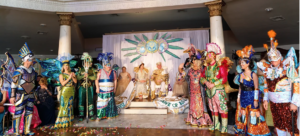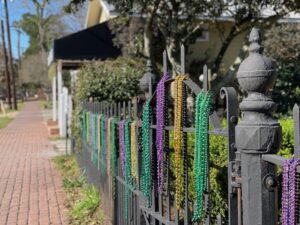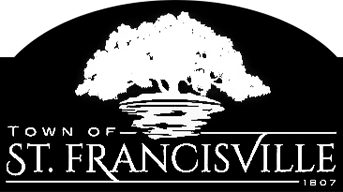Something that Louisiana is known for internationally is Mardi Gras. Each Parish, City, Town, or even neighborhood has its own traditions and customs when it comes to the annual celebration. St. Francisville and West Feliciana Parish are unique in that there is currently no designated parade or celebration during this season. That has a lot to do with the history of the area and the influences over the years. However, don’t let that deter you from visiting, there is still plenty to do, especially with Mardi Gras being the day before Valentine’s Day this year.
Mardi Gras, French for “Fat Tuesday,” has a rich history rooted in both religious traditions and cultural celebrations. Its origins can be traced back to ancient Roman and medieval European festivities that marked the transition from winter to spring. The event became intertwined with Christian practices when it was adapted as a prelude to the somber season of Lent, the 40 days of fasting and reflection leading up to Easter. The celebration was brought to the Americas by French explorers, particularly gaining prominence in New Orleans in the 18th century. In this vibrant city, Mardi Gras evolved into a lively and colorful extravaganza characterized by extravagant parades, masked balls, and lively street parties. Today, Mardi Gras has become synonymous with the spirit of revelry and excess, celebrated not only in New Orleans but also in various cities and regions around the world, each putting its unique cultural twist on this festive occasion.
West Feliciana Parish has had humans living here for over 10,000 years. Native American tribes, like the Houma and the Tunica, tribes used the Mississippi River, fertile land, and the diverse flora and fauna to thrive here. The first European contact came when a Spanish expedition led by Hernando de Soto and his men explored the Mississippi in 1541 and 1542. The French weren’t far behind (in historical terms), when René-Robert Cavelier, Sieur de La Salle explored the lower Mississippi in 1682. He would claim all lands drained by the Mississippi “La Louisiane” after Louis XIV. In 1763, after the French and Indian War, France ceded the Louisiana Territory and the “Isle of Orleans” to Spain and territory east of the Mississippi to Great Britain. In addition, Spain gave the Florida territory to Great Britain in exchange for keeping Cuba. The section of modern-day Louisiana that includes West Feliciana Parish, East Feliciana Parish, East Baton Rouge Parish, and the other parishes north of Lake Pontchartrain was later claimed by the British as part of the West Florida Territory. During and after the American Revolutionary War, loyalist to the British Crown flooded into Feliciana Parish. After a few tumultuous decades, and the region changing hands a couple of times, the settlers in the West Florida territory rebelled in September 1810 and created their own republic that stretched from the Mississippi River to the modern-day boarder of Alabama and Florida, with St. Francisville being the capital. In December of 1810, President James Madison annexed the republic and made it part of the Louisiana Territory.
So, when Mardi Gras was growing in popularity in the southern part of the region, there was a disconnect with the British protestant settlers. However, that doesn’t mean the traditions haven’t found their way into the area. This is Louisiana of course, and we love any excuse for a good time! You can still find delicious King Cakes at Audubon Market and Bespoke 4 U. There are also some great opportunities to witness local parades in Clinton, Louisiana (at the time of writing this, the parade hasn’t been scheduled); and two very popular parades across the Rive in New Roads on Mardi Gras day (11 a.m. and 2 p.m.). St. Francisville also has it’s own Mardi Gras Krewe, The Krewe of Assisi, which host events throughout the year, including an annual Mardi Gras Ball. You can find out more information about them here.

St. Francisville is also in a short drive to many other parades and traditions around Southeast Louisiana. It is about 35 minutes away from Baton Rouge, where the famous Spanish Town Parade takes place on the Saturday before Mardi Gras every year (this year it is on February 10th at 12 p.m.). For the full schedule of Baton Rouge parades click here. It will take you about an hour and 15 minutes to drive to the Lafayette area, where many of the celebrations are steeped in Native American and Cajun traditions. You can find more about their Mardi Gras schedule here. If you want to experience a New Orleans Mardi Gras, drive about an hour and 45 minutes south. There you’ll get the large parades, unique throws (what we call the items thrown off the floats), and revelry that you typically see in movies. Click here for their full schedule. Use St. Francisville as your quiet home base, and just take day trips to experience a Louisiana Mardi Gras!
This year, Mardi Gras falls on February 13th. (Although, there are parades and celebration all season long leading up to Fat Tuesday) What better way to combine a Valentine’s getaway with a fun celebration?! It could also be a great excuse to escape the crowds in the cities and spend a weekend in quaint St. Francisville, exploring some of the lesser-known history of the area. Plan your trip using our itinerary building as you search through our website!






